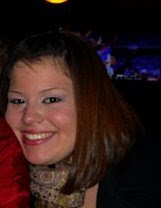- What is the inverted pyramid?
The inverted pyramid is a general format for writers to follow to make sure they get the bulk of the important information toward the beginning of the story, filtering down until the least important information is at the bottom.
2. What's a delayed lede? What other names does it go by?
Also known as a feature or soft lede, a delayed lede eases a reader into the story by not throwing all of the fact out in the first paragraph, rather try to catch their attention with more flair and creativity.
3. What's a nut graf? Where does it come in the story?
The nut graf is the paragraph after the lede, giving more in depth details than the lede can handle.
4. Where does the when element go?
The "when" works best when it is at the end. "who did what where and when, said who."
5. What's a summary/chronology story?
A story that is told in the order which the events occurred. This type of story typically follow a summary lead and nut graf.
6. What special handling does a crime story require when it comes to naming suspects?
- Until the person has been formally charged of the crime, do not use their name.
- Make sure there is a succinct difference between the person charged and the person who committed.
-Do not think that using "allegedly" is safe. It isn't.
7. What is a multiple element story
A multiple element story is one that has more than one point or fact to be brought up. The lede will summarize/mention each point/element that is going to be brought to the table.
- What is a second day story?
A second day story is generally a follow-up story that contains more information and is more specific than the first day. A first day article may be "A Towson alumnus was killed in his apartment this weekend." A second day story would be " Daniel Colverston, a 22-year-old Towson alumnus, was shot and killed at his Fairways apartment on Saturday, February 14." More information is known at this point usually, and therefore, a more thorough report can be made with better detail so the readers may learn all the specifics.
8. What is the difference between correlation and causation? What special handling does this require in story writing?
Correlation is multiple events happening simultaneously (He was driving while talking on his cell phone when he hit the guardrail). Causation is one event that made another happen (he fell asleep at the wheel, so he hit the guard rail).
9. What kinds of facts should be double checked?
Names, dates, places, corporation names, titles, numbers and graphics. According to Joseph Pulitzer, the main rule of good journalism is "accuracy, accuracy, accuracy."
10. What are the rules for working with quotes?
Make sure the quote adds something to the story.
Make sure the quote is someone's EXACT words, not what you think they may have meant instead of the words that came out of their mouth.
Paraphrase where necessary, but still using the correct quote.
Give credit where credit is due.
Attribution.
Avoid inverted attribution
Make sure it is very clear to the readers who is speaking.
Choose your verbs carefully (...," he admitted. ...," he said. ...," he exclaimed. Did he really ADMIT something? or did he just say it? Was he excited or yell when he said something? Did he exclaim?)
